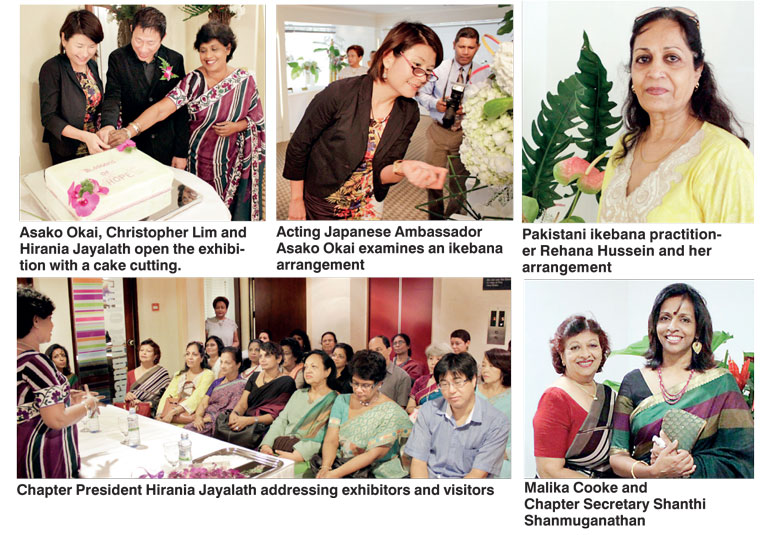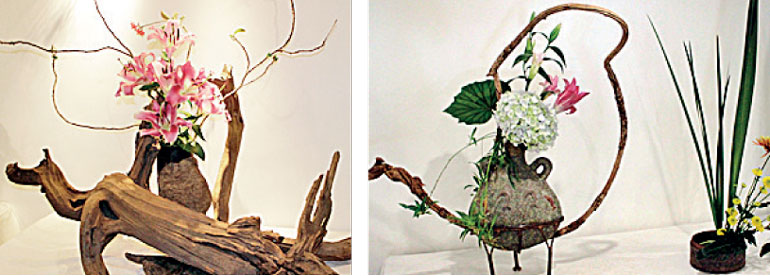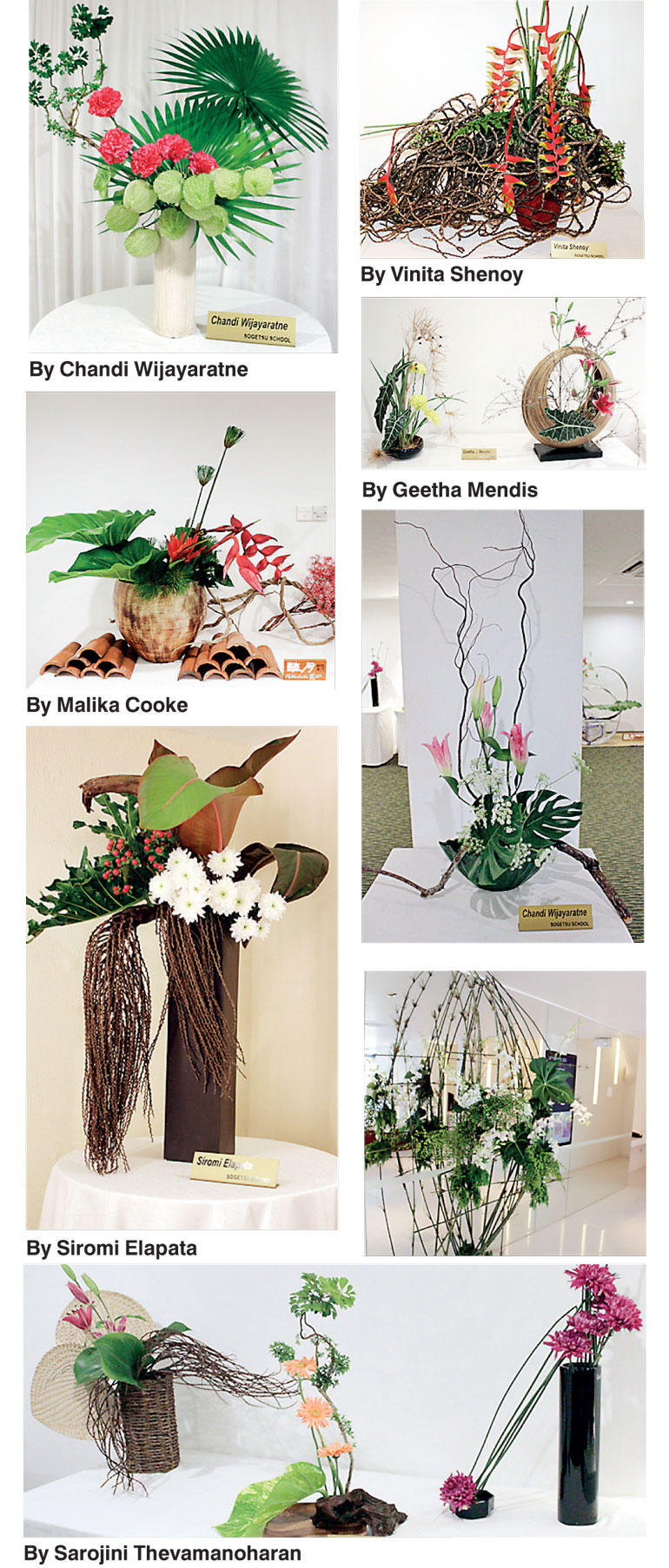Tuesday Dec 09, 2025
Tuesday Dec 09, 2025
Saturday, 24 October 2015 00:05 - - {{hitsCtrl.values.hits}}

By Shiran Illanperuma
Still clinging to old colonial hang-ups, the Sri Lankan idea of beautiful floral design is a typically Victorian one. Gaudy blooms all packed together in a heavy bouquet that bludgeons the eyes with sheer size and saturation. Not so, at the ‘Blossoms of Hope’ exhibition by Ikebana International Chapter 262.
Derived from the Japanese words Ikeru and Hana, Ikebana roughly translates to “giving life to flowers”. The aesthetics of these arrangements go against conventional wisdom. Asymmetric, frugally flowered and with gaunt stems naked against a plain white backdrop; they demonstrate a minimalist restraint that thrives on negative space.
Perhaps what is most remarkable about these designs is the incorporation of distinctly local flora that sets them apart from even veteran Japanese practitioners. First President of the Sri Lanka Chapter Malika Cooke explains that sourcing local ingredients is key to the philosophy of Ikebana.
“Using objects that are local and in season is always encouraged as it is very important for the plants within the design to be as fresh and alive as possible. For example one of my arrangements incorporates the Gloriosa Lily, called Niyagala in Sinhala or Karthigaipoo in Tamil,” says Cooke.
Rehana Hussein, a Pakistani Ikebana practitioner visiting the exhibition, says that Sri Lanka is uniquely blessed with abundant foliage. Indeed the island is well known for its rich biodiversity. Fertile soil with a landscape varying in rainfall and altitude help give rise to many unique flora.
“Sourcing local materials is a lot more difficult in Pakistan and even for practitioners in India where the landscape is drier. We make do with dried branches, coconut husks and whatever we can find but Sri Lanka is blessed with many unique and beautiful flowers,” she says
While the Ikebana on display at ‘Blossoms of Hope’ is of a relatively high standard, it wasn’t too long ago that the island lacked any qualified instructors and produced what Ikebana expert and Sri Lanka chapter advisor Christopher Lim calls ‘mediocre’ work.
“This is an art that needs a high degree of patience, experience and maturity. You need to spend time developing your skills and you also need to have a certain amount of capital and access to resources,” says Lim.
The Singaporean national, who has overseen the local chapter for seven years now remarks that despite these odds the local scene has flourished with pioneering practitioners like Malika Cooke who are now teaching the next generation.
Said Lim, “This year’s exhibition the standard has gone up so much that I’m really shocked and surprised.”
Indeed even Deputy Chief of the Japanese Embassy Asako Okai expressed surprise at the proficiency of local practitioners. Touring the exhibition, the then acting ambassador was taken aback by creative flourishes and the touch of local ingredients.
“I am very happy to see Japanese culture deeply rooted here,” she said. “It is good to see that Ikebana is no longer an art practiced just by Japanese expats and that Sri Lankans have achieved an excellent standard.”
Flowers for a cause
The fifth consecutive edition of the ‘Blossoms of Hope’ exhibition also doubled as a fundraiser for a children’s cancer ward at the Maharagama Cancer Hospital.
In a moving speech, current Ikebana Sri Lanka Chapter President Hirania Jayalath said, “It’s a beautiful exhibition but we did this because of the children.”
Having spent time working with young cancer patients and their grieving parents, many of whom are not affluent and travel miles to the hospital, Jayalath recounted what she had seen.
“The trauma of the parents is worse than the trauma of the child. The children don’t understand that much but it’s the parents who have to sleep on the floor for months and weeks on end,” she said.
Though the conditions in the cancer ward are of a decent standard, Jayalath says that it is the lack of resources that is pressing.
“What I was told very recently was that when the ward needed five vials of a drug, they only had one vial for the whole week. So that’s how bad it gets,” she said.
This isn’t the first time the local Ikebana chapter has raised funds for a charitable cause, having done so for women with breast cancer at an exhibition in Kandy earlier this year.
With a new cause in her sights, Jayalath hopes to earn enough money to make a difference. “Even if we only raise enough money to save one child, it will have been worth it.”


